Best service dog breeds: Which canines excel at caring for humans?
Benefiting people with disabilities, the best service dog breeds can provide assistance in all kinds of ways
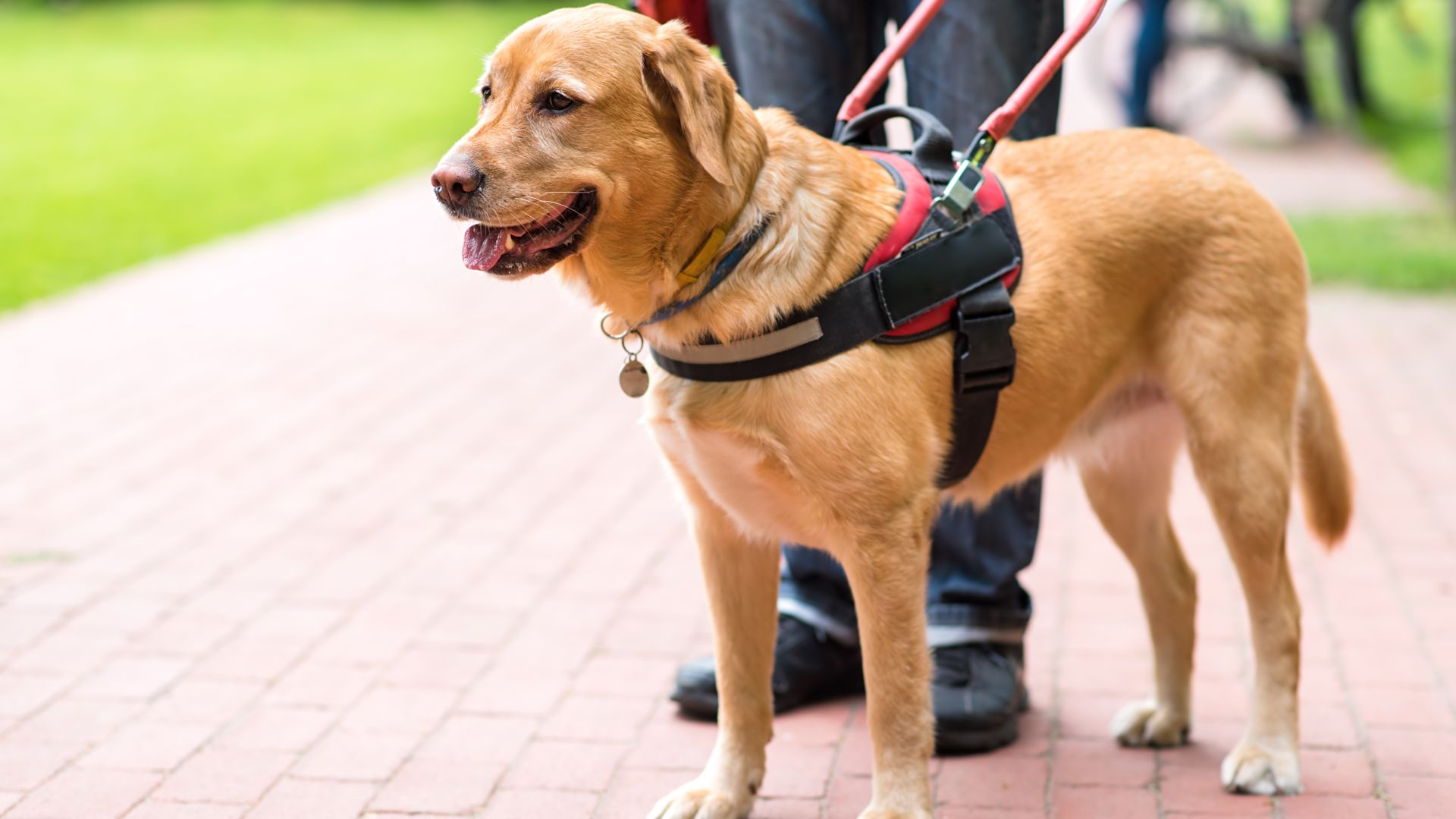
Our canine companions make for great pets but the best service dog breeds have a very special purpose. They are trained to assist people who have physical or mental disabilities. They can also help anyone living with a life-threatening condition, or lend a paw to anyone with special needs.
Highly trainable and eager to please, the best service dog breeds can enable humans to lead independent lives. Guide dogs, for example, are invaluable assistants for anyone who is blind or partially-sighted, assisting with the day-to-day life and ensuring safety. Service animals can also be trained to assist people who are deaf.
But the scope of a service dog goes much further than this. They can be taught to pull wheelchairs, protect people having a seizure, calm someone with PTSD during an anxiety attack, and remind people to take their medication.
Indeed, they are so useful and important that it's illegal to discriminate against them in so many countries. Service dogs cannot be refused entry into shops, restaurants, hotels, public buildings, banks or taxis, even if companion animals generally aren't allowed in. They must, however, be well-trained and certified.
If you’re wondering how to train a service dog, this step-by-step guide can help you find out more.
Any breed can be a service dog but some are more suitable than others, primarily because they have the trainability and temperament to carry out important tasks.
Best service dog breeds
1. Labrador Retriever
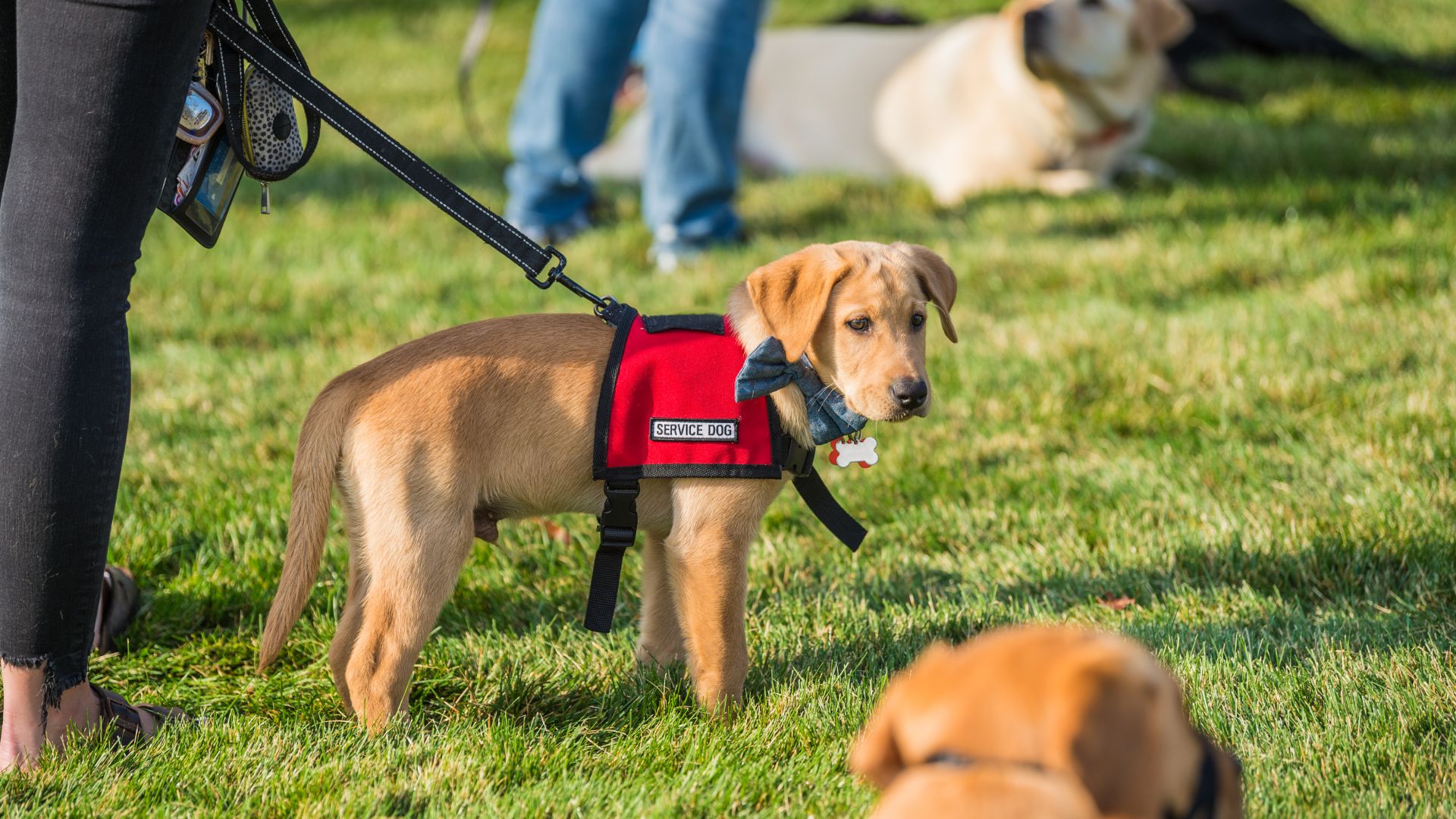
Labrador Retrievers are arguably top of the best service dog breeds. They are generally easy to train because they are eager to please, friendly and love being around humans.
Get the best advice, tips and top tech for your beloved Pets
Their exceptional intelligence also ensures they understand what is being asked of them. In fact, according to Prof Stanley Coren, author of the seminal 1994 book The Intelligence of Dogs, Labrador Retrievers are among the 10 smartest dog breeds, capable of solving problems and understanding up to 250 words.
It's why they have proven to be so adaptable, certainly proving their worth as amazing, loyal guide dogs. They are relaxed, gentle and capable of making judgement calls. They're also just the right height and easy to groom.
2. Golden Retriever
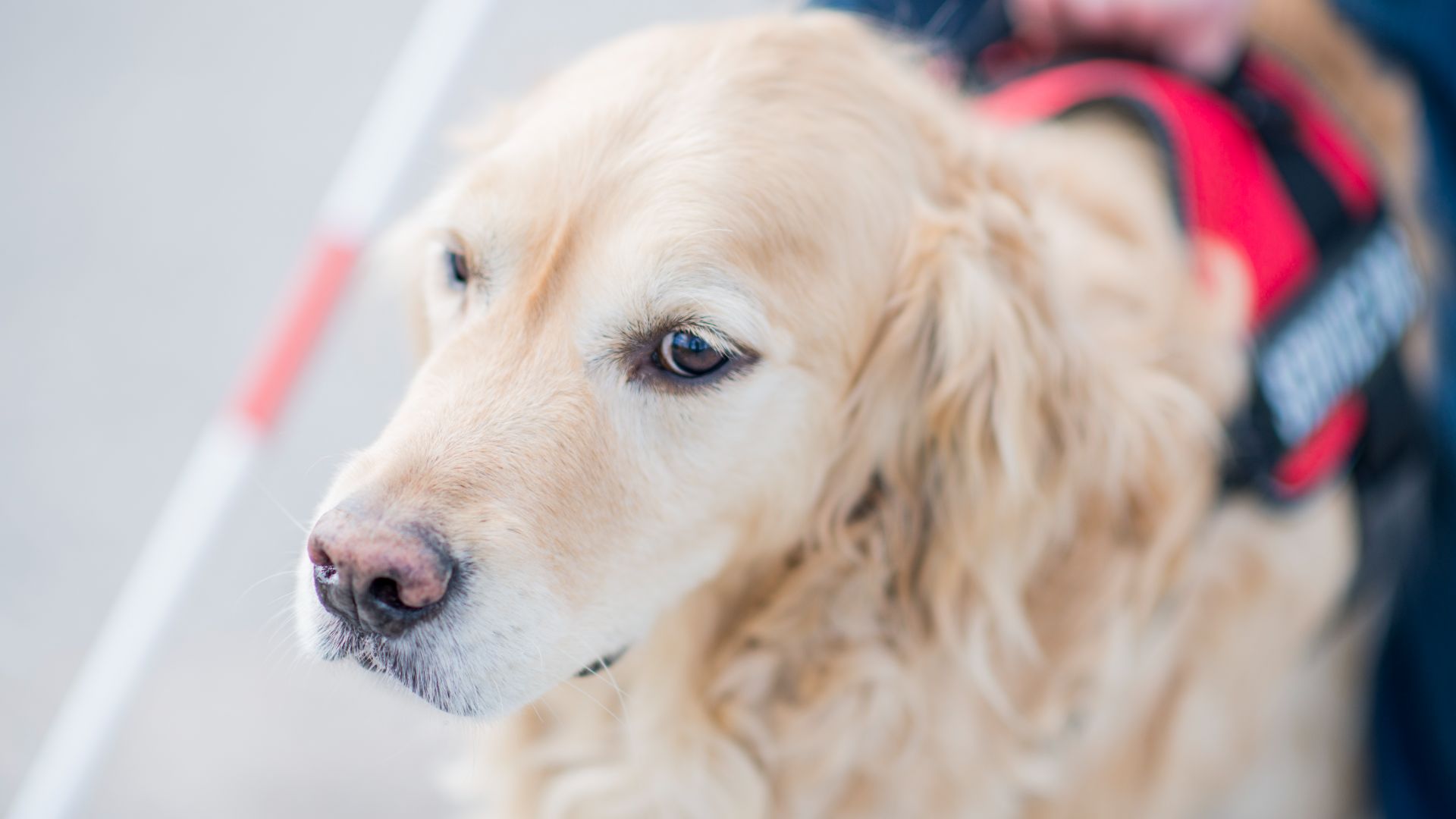
Golden retrievers are more sensitive and less vocal than Labradors, and they are actually in higher up in Prof Coren’s ranking for intelligence. Again, they are gentle, loyal and trainable, proving to be another people-pleaser who enjoys being given tasks.
As well as being good guide dogs, golden retrievers can help people with a hearing impairment and they can be trained to carry out specific tasks. They are more than able to gently carry items in their mouths without causing damage and they also prove steady on their leads. They are also on our list of best therapy dog breeds!
3. Border Collie
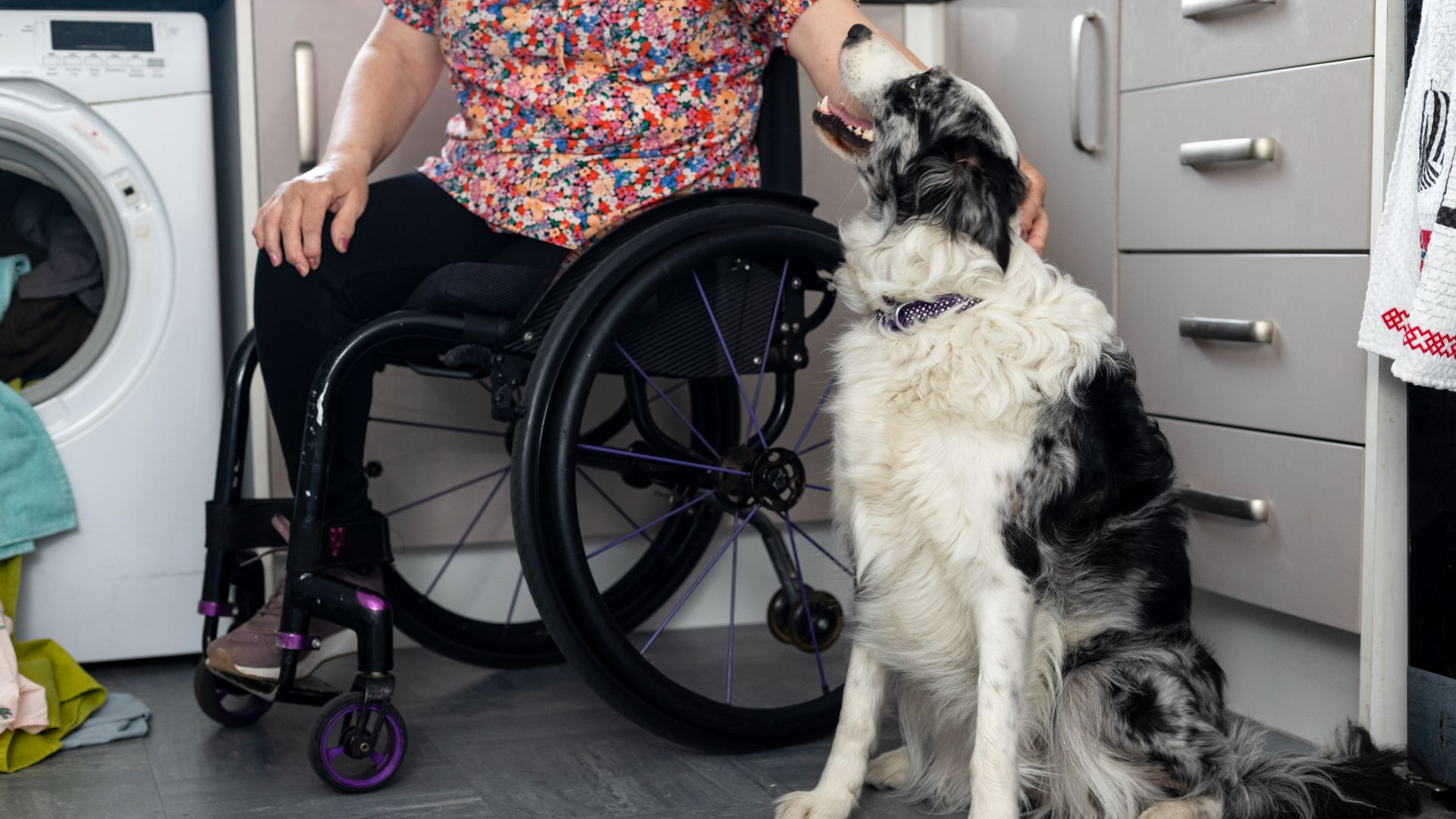
Border Collies were originally bred, and are still used, as herding dogs. They have great stamina, a good brain and a sensitive nose. They can quickly pick up on sounds and they are sensitive to people’s moods.
This makes them particularly useful as psychiatric dogs, coming to the aid of people who struggle sleeping or have thoughts about harming themselves.
They are also great with people who need physical assistance and their extreme sense of protectiveness make them wonderful to have around.
4. Standard Poodle

Standard poodles (number two in Prof Coren’s list!) are one of the easiest dogs to train, they can pick up new commands with fewer than five repetitions and they will obey the first command at least 95% of the time.
These dogs also adore training sessions and love learning new things. They tend to be paired with people with a hearing impairment but they are also good at fetching things, acting as guide dogs and helping people with life-threatening allergies and diabetes. Some poodles are used to assist with mental disabilities and seizures as well.
5. German Shepherd

Fiercely loyal and courageous, many would associate a German Shepherd with police work. In fact, they’re also excellent all-round service dogs thanks to their intelligence, trainability, protective instincts and eagerness to please.
German Shepherds excel as both guide and hearing dogs, and can support people with physical disabilities by learning to fetch and carry. They are sensitive enough to detect allergens in foods and alert their handlers to the onset of a seizure, and are one of the best dogs for emotional support, too.
6. Great Dane
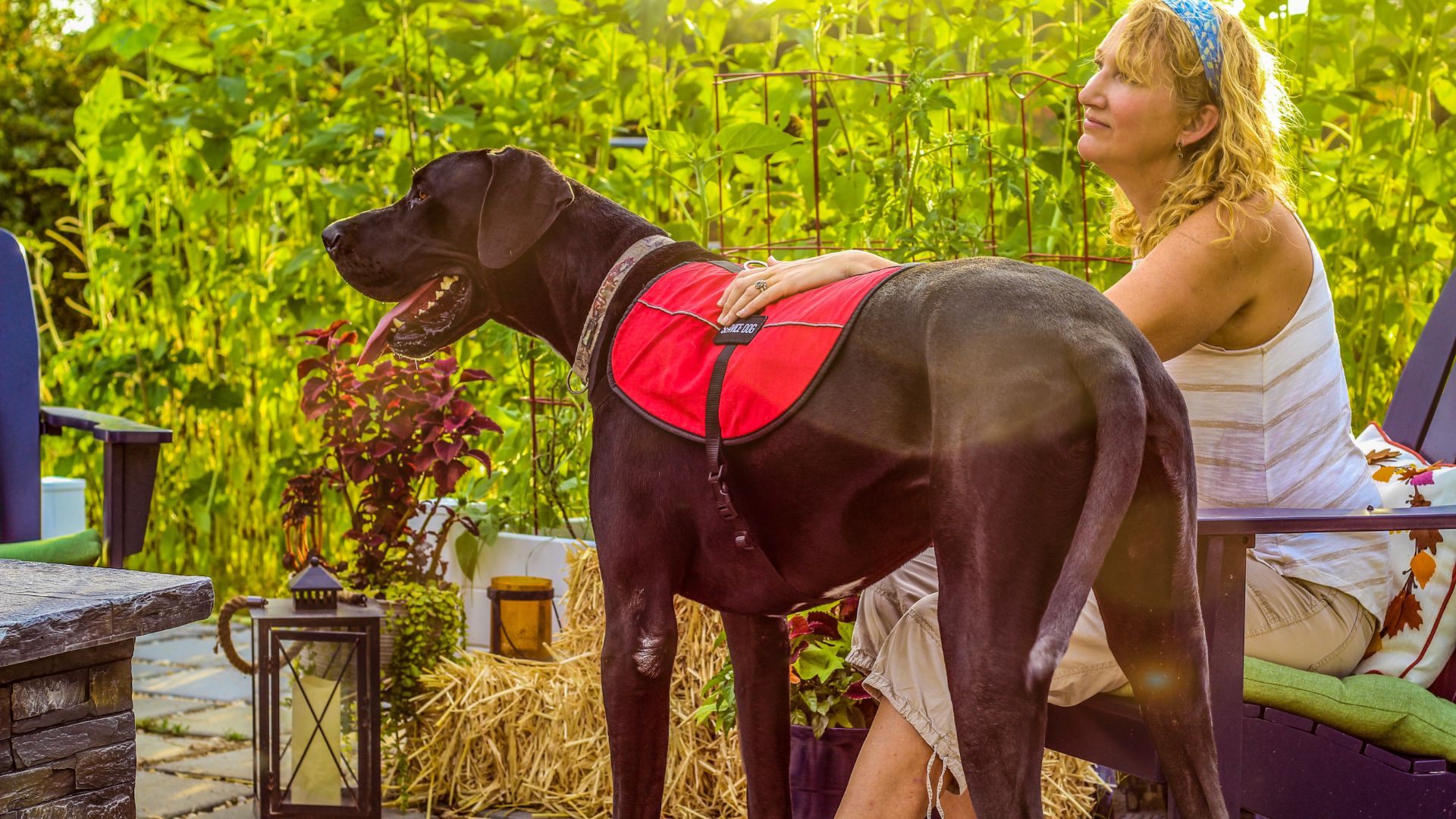
A lesson commonly seen service dog, Great Danes can assist children and adults with limited mobility or difficulty with balancing. Their strength and size means they can be trained to support their handlers both in and outside of the home.
Known for their placid natures, these gentle giants also make excellent therapy dogs and can be seen in care homes for the elderly, hospices and children’s hospitals bringing joy to their residents.
7. Boxer

Boxer service dogs aren’t a common sight, but they are known for their affectionate natures and love of people, which makes them wonderful therapy dogs. Their calm and gentle personalities make them a quiet and kind visitor in any setting to provide emotional support and comfort.
Others believe boxers to be a wonderful choice for PTSD sufferers due to the strong bonds they form with their humans, which allows them to be extra intuitive.
8. Cavalier King Charles Spaniel
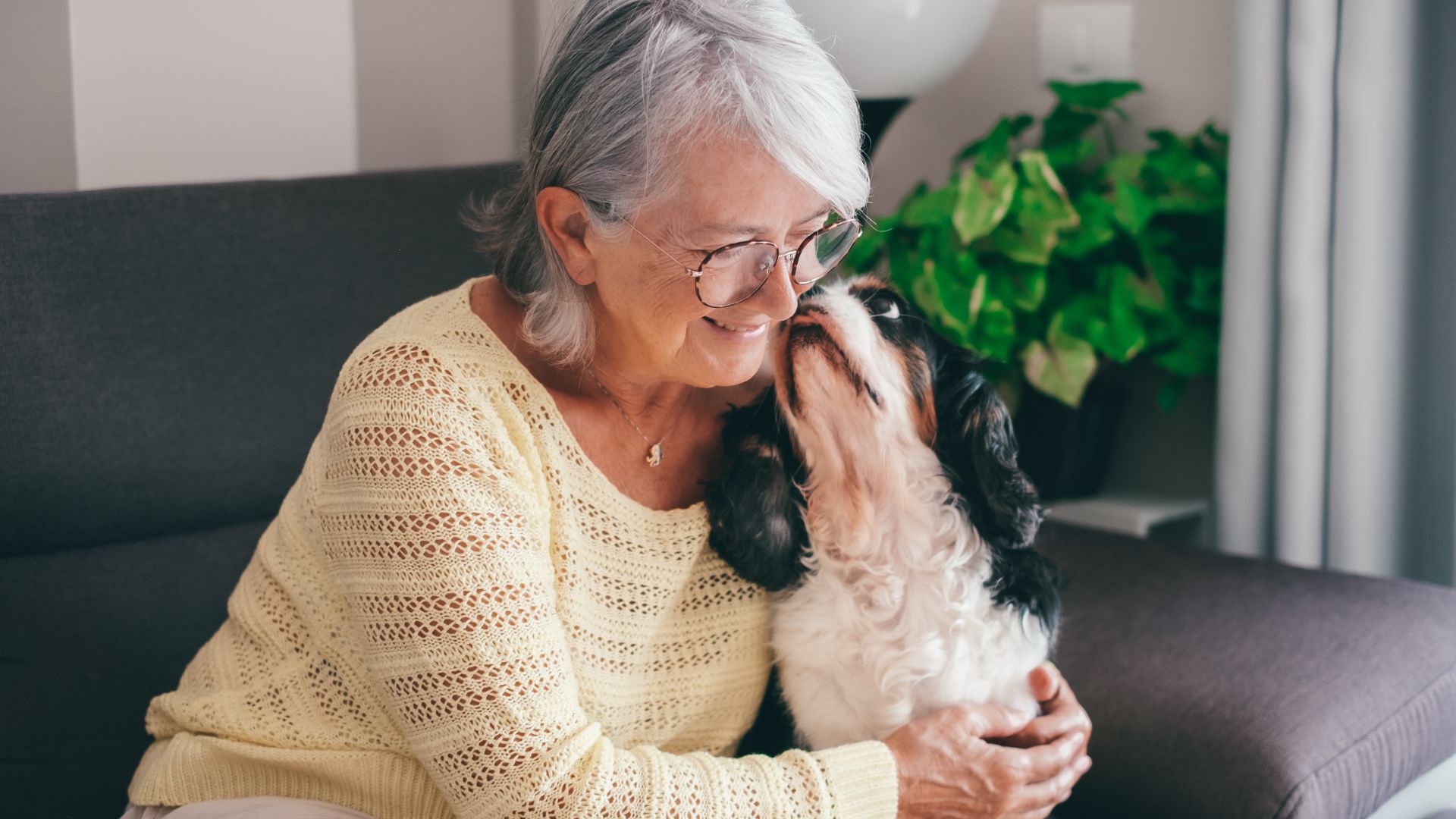
With their gentle and loving natures, Cavalier King Charles Spaniels are ideal candidates for service work, especially as therapy dogs. They’re also on our list of best dogs for anxiety, and their intelligence and trainability make them great mobility dogs for fetching items and opening doors.
9. Pomeranian

A lovely, cuddly lapdog, the Pomeranian is an ideal therapy dog. Loyal and devoted, the Pomeranian is what’s often known as “Velcro dog” because they are always at their owners’ sides. As such, they can be an excellent match for people with anxiety or PTSD.
10. Saint Bernard

Strong, strapping and soft to the core, Saint Bernards can make wonderful emotional and physical service dogs. Saint Bernards are historically working dogs from Switzerland tasked with rescuing people lost in the mountains or finding them buried in snow.
This working history is reflected in the breed’s strength, calm temperament and eagerness to please, which makes them receptive to training for mobility and emotional support. There are so many reasons to love Saint Bernards.
How are the best service dog breeds selected?
There are no set best service dog breeds, and they are usually selected based on their temperament and trainability.
“Service dogs must be loyal, reliable, and even-tempered as they are assisting very vulnerable owners,” says companion animal vet Dr Rebecca MacMillan. “Technically any dog could be a service dog, but we know some breeds are more likely to have the qualities we desire.
“Labradors and Retrievers usually tick all these boxes, which is why we see them most often,” she continues. “However German Shepherds, Saint Bernards, and Collies can all make good service dogs too.”
That said, the breed is still no guarantee.
“All puppies will go through socialization, training, and assessments to make sure they definitely have the right temperament,” explains Dr MacMillan. “I have certainly met a few Labradors over the years who have failed due to their over-excitability!”
The size of the dog is also important.
“Large breed dogs are used most as service dogs because of their strength and ability to support owners with mobility issues. However, smaller dogs may be used for owners with hearing impairments as strength and size are not needed.
“These dogs must be alert to changes in human behaviour and not easily distracted by other things like food or strangers.”
Dr MacMillan adds that the best service dog breeds should also be physically healthy.
“A dog with health issues will require multiple vet visits, use vital charity resources, and may not be able to do their job effectively,” she explains. “Unfortunately, many pedigree breeds are prone to health issues like inherited eye complaints, hip dysplasia, and cancer, including ones commonly used as service dogs.
“Puppies will be obtained from breeders who have done all the relevant health screens to reduce their risk of hereditary health problems. These breeders will also only mate dogs that have the right temperament, in the hope they pass these traits onto their pups. If a dog develops a health complaint at a young age, then it is unlikely they will make it as a service dog.”
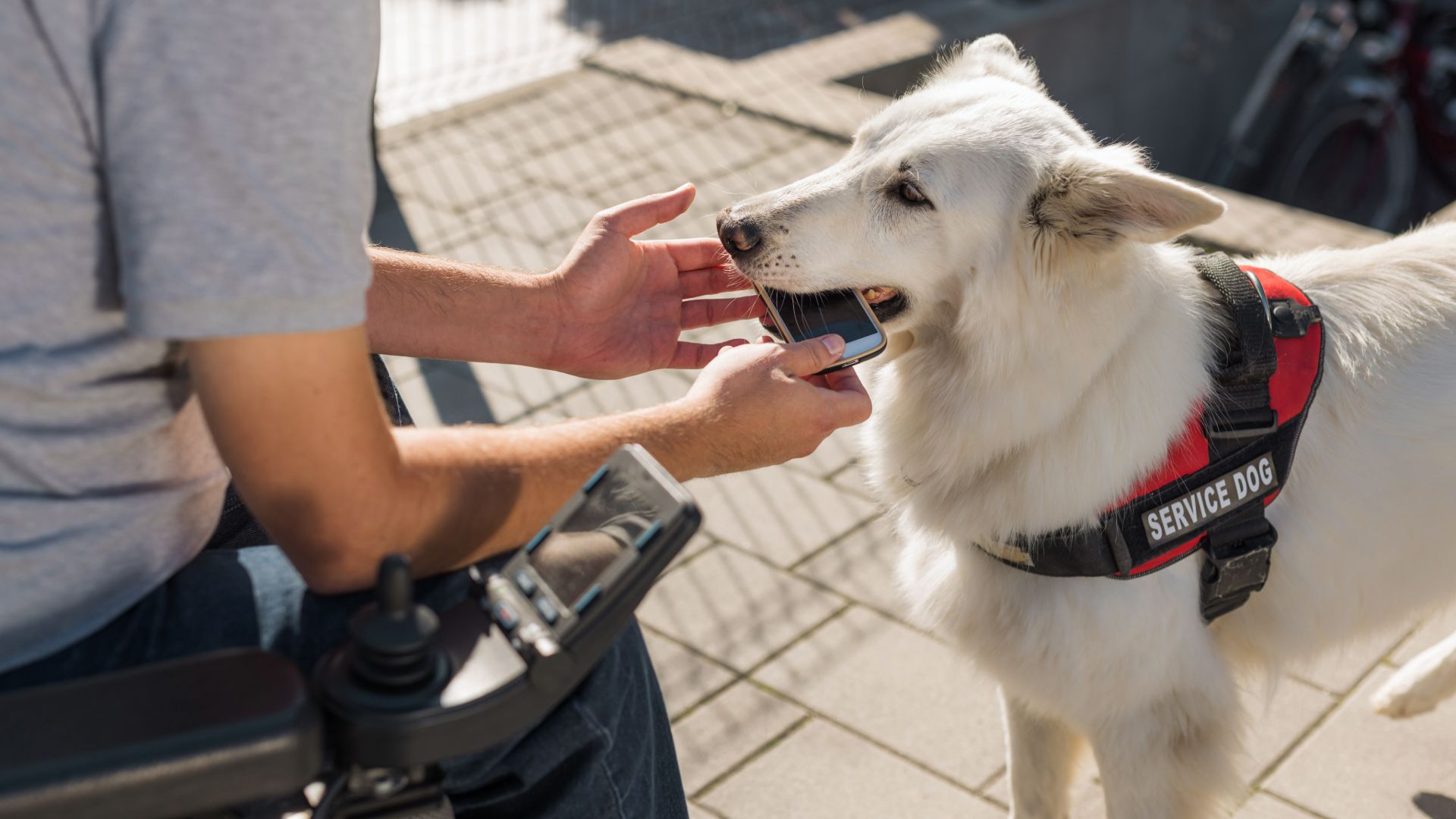
How are the best service dog breeds trained?
According to Dr MacMillan, it can take up to two years to fully train a service dog.
“This will depend on the training techniques used, the age when training starts and the job that the dog will be doing at the end,” she explains. “For example, guide dog training always takes a long time as these dogs will be doing tricky jobs like guiding their non-visual handler across the road. Whereas service dogs that are intended for people with anxiety will not need to carry out such complicated tasks and their training time will be much shorter.”
Generally training starts between 2–12 weeks of age.
“At this time, it involves the correct socialisation and the foundations of basic obedience such as sit and stay.
“Between 3–6 months, basic obedience skills are continued, and more advanced commands are introduced,” she continues. “The dog also learns how to walk in a harness or vest, which is an important part of being a service dog. Positive introductions to different environments are made around now too, like crowded places, so that the dog learns to be adaptable.”
Training steps up again at 6–12 months.
“At this age, service dogs will start to be trained in some of the specific skills they will need to perform their role,” says Dr “For example, guide dogs will need to learn how to maneuver around obstacles, hearing dogs will need to be able to respond to certain sounds, and mobility assistance dogs need to pick up items, open doors and provide physical support to their owners.”
Between 12–18 months of age, dogs start to do their training in the real-world.
“This tests the dog’s ability to stay focused and on-task in busy streets or on public transport. A service dog mustn’t get distracted while taking care of its handler.
“Finally, graduation occurs around 18–24 months! The dogs must pass rigorous assessments to make sure they are up to the standard expected of them.”
However, training isn’t completely over at this point.
“These dogs will need ongoing training and support to ensure that standards don’t slip,” adds Dr MacMillan. “The handler’s needs may change over time and so the dog’s skills may need to evolve too.”
Want to learn more about these amazing animals? Here are some more facts about service dogs
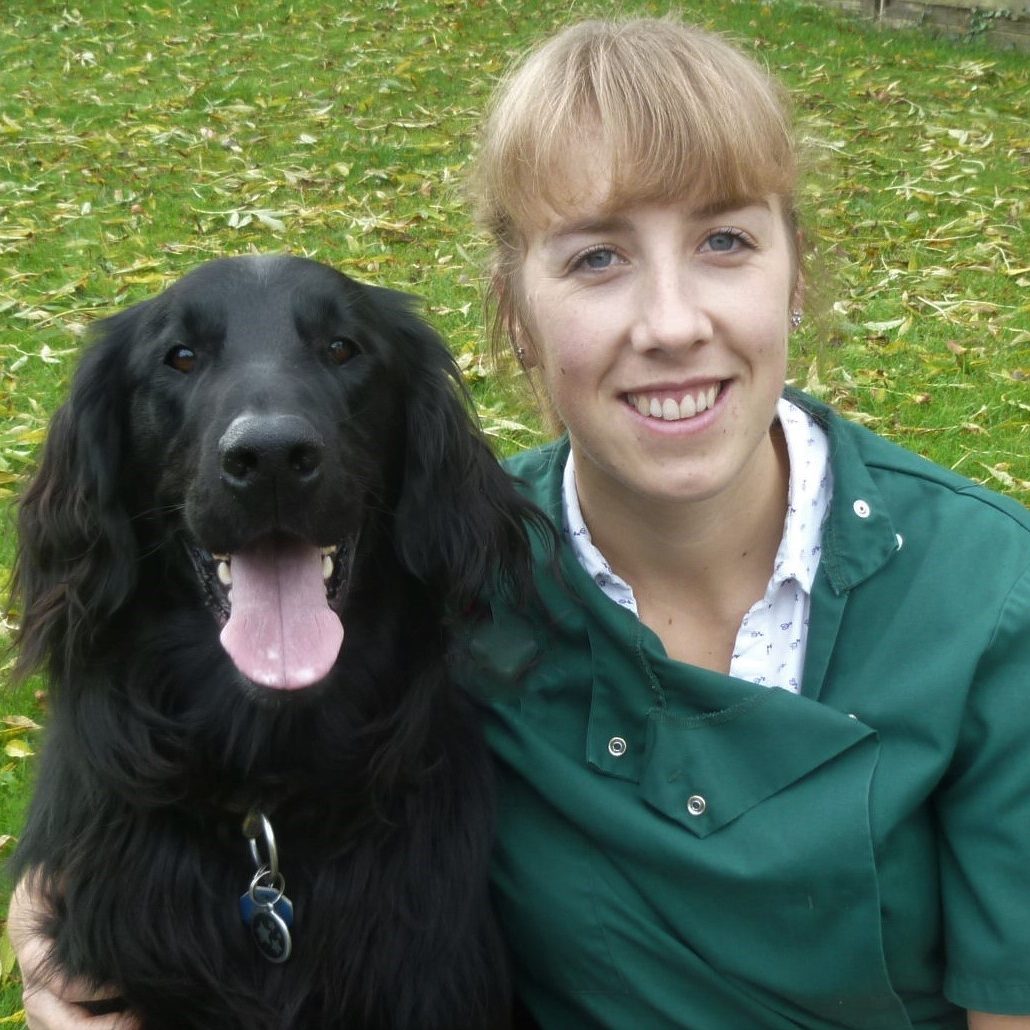
Dr MacMillan is a companion animal vet who has always had a passion for writing and client communication. She works in the South West and loves complex medical cases.

Bethany is an experienced writer who has been writing across the pets and equestrian sector for eight years.
Edited by Georgia Guerin.
This feature was last updated on March 21, 2025 by Bethany Stone.

David Crookes has been a journalist for almost 30 years and he has written for a host of magazines, newspapers, websites and books including the World of Animals Annual, BBC Earth, Live Science, The Independent and Tom’s Guide.
Born in England, he lives with two cats but he’s also keenly interested in the differences between the huge number of dog breeds – in fact, you can read many of his breed guides that he’s written in collaboration with vets here on PetsRadar.
With a lifelong passion for technology, too, he’s always on the lookout for useful devices that will allow people to keep their pets happier and healthier, and provide them more time to spend together.
David has a degree from Durham University, as well as postgraduate diploma in journalism from the University of Central Lancashire.
- Bethany StoneFreelance Writer
- Dr. Rebecca MacMillanVet
